October 22, 2021
Unity Ceremonies

Growing up in the 90s I almost always equated weddings with those elaborate lacquered brass unity candle stands at my church. If I was running around the church playing hide-and-seek and hiding in the storage room where those candle stands were stashed, I knew no one would find me. I also knew I’d spent my hiding time dreaming about my wedding (I was a romantic even as a kid). What I didn’t know as a kid was there are a lot of other options for a unity ceremony that don’t involve lacquered brass candle stands. The first wedding I attended where the couple opted for Celtic handfasting instead of the Christian unity candle was eye-opening. So, if you’re looking for the perfect unity ceremony idea for your wedding, look no further. I’ve compiled a list of options ranging from Harry Potter chic to candles (without the lacquered brass).
Three Cords (otherwise known as the braiding of the cross)
Ecclesiastes 4:12 says “A cord of three strands is not easily broken”. This ceremony is from the Christian tradition and symbolizes the incorporation of God into the marriage. Typically, the groom will hold the cords while the bride braids them. Some couples choose to create a wall hanging to display the braided cords in their home.


Sand art
This ceremony works well for any couple but is especially beautiful for blended families. Each member of the family pours sand from their own vase into a singular vase. As the sand falls into the vase the colors blend together and become inseparable. While also very reminiscent of my childhood in the 90s (hello Lisa Frank sand art kits), this ceremony is still just as beautiful and meaningful today.

Communion
Some religious ceremonies are full services and include Holy Eucharist or Communion. For these ceremonies, the taking of the bread and wine can also function as a unity ceremony. Similar to the braiding of the cross, this unity ceremony symbolizes incorporating God into the marriage.
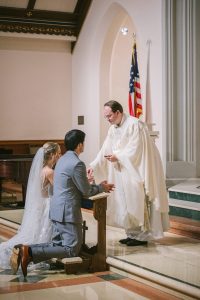
Traditional candle lighting
If you haven’t figured it out yet, this ceremony is one of the most common unity ceremonies (and it certainly was in the 90s). Thankfully, many churches have upgraded from the traditional candle stands (which honestly, I think even to this day would be taller than I am). In this ceremony, family members light candles before the service begins, and then during the service each member of the couple lights one larger candle from the family candle.

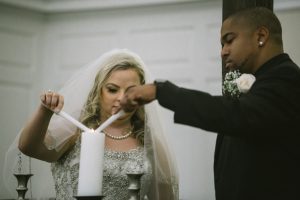
Garland ceremony
This ceremony (also referred to as the Varmala ceremony or Jaimala ceremony) comes from the Hindu tradition. In general, Hindu weddings don’t place the focus on the couple getting married, but instead the two families coming together. When the couple gives the garland to each other at the start of the ceremony they are symbolizing love and respect as well as the purity of the marriage.
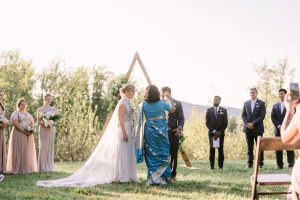

Sand in an hourglass
Some couples take the sand art unity ceremony one step further and place their sand in an hourglass. The hourglass symbolizes enduring time so when used in the wedding unity ceremony it becomes a symbol of enduring love and marriage. Additionally, each time the hourglass is turned, the sands inside become more intermingled.
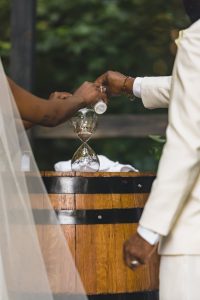
Exchanging love letters
Not all couples want their unity ceremony to be public and a part of the wedding ceremony. Some couples choose to privately exchange love letters before the ceremony.

Filipino Candle, Cords, Coins, and Veils
This ceremony traditional to the Filipino culture has four separate parts. Each item in the ceremony has a symbolic meaning. My favorite part of this tradition is that sponsors (often the parents of the couple) are participants in the ceremony.
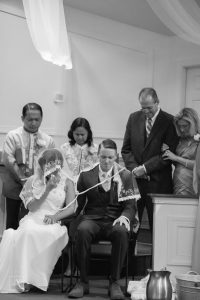
Tree Planting
I love that the result of this ceremony is a physical tree the couple can come back to over the years to remember and reflect. Sometimes couples will bring soil from their hometowns to put in when they plant the tree.

Handfasting
If you’ve heard the phrase “tying the knot” this ceremony is the physical picture of that view of marriage. In a handfasting ceremony, the officiant will tie the hands of each member in the couple together (during which sometimes the couples will state their vows). This ceremony is symbolic of the commitment the couple has for the marriage.

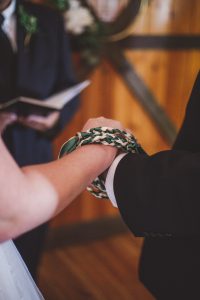
Prayer ceremony
This ceremony has always been so meaningful at weddings I’ve attended (please catch me in the congregation crying when I should be praying). Like communion and the branding of the cords, this ceremony stems from the Christian tradition. Couples will invite their families to join them at the altar in prayer. Often people still in the congregation are asked to use this time to pray on their own for/over the couple.
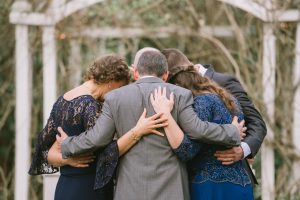 Other ideas to consider:
Other ideas to consider:
- Maypole – this ceremony comes from folk tradition. The maypole will have ribbons tied to it with letters of well wishes and support on each ribbon for the couple. This ceremony places high importance on the couple’s community.
- Pot of tea – this ceremony comes from several cultural traditions. Like the candle or sand ceremonies, this ceremony also blends two things together that become one. In this tradition, two different teas blend to become one.
- Placing of the cross – some couples will choose to have a cross or religious symbol blessed by the officiant that they can then place in their home.
- Wish lantern release – I mean, could this be any more like a movie? I love the romance of this ceremony in which couples release a lantern into the air. Tradition states that this release allows the couple’s love to float into the universe together, as one.
- Circling – in this ceremony from the Jewish tradition, each member of the couple will circle the other seven times (a very Biblical number). The circling is symbolic of the creation of a new family.
- Sorting hat – I told you I’d be including Harry Potter. Couples can ask their officiant to choose their wizarding house as part of their ceremony.
- Breaking the glass – another ceremony from the Jewish tradition, this ceremony symbolizes the finality of the covenant of marriage (the glass breaking refers back to the destruction of the temple in Jerusalem).
- Jump the broom – this ceremony dates back to Africa in the 17th century (that’s the 1600’s for those playing at home). The jumping signifies the coming together of the two families and also a prosperous life together (including prosperity in children).
- Completing a painting – seems dangerous in a wedding dress but definitely creative. Just like in other ceremonies, the paint mixes together to show the unity of the marriage.